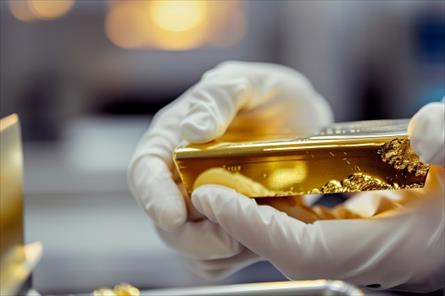Gold vs. Silver: Which Melts Faster & Why It Matters for Refining
Melting transforms solid metal into a liquid form, enabling additional refining and processing. Silver and gold are two of the most popular precious metals, with gold having a higher melting point than silver. Below, the experienced pros from First National Bullion, the Scottsdale gold coin dealers collectors trust for outstanding service and industry knowledge, discuss more factors explaining why gold has a higher melting point and how the process affects both precious metals.
Melting Point Temperatures
The point at which a solid metal turns into a liquid is known as the melting point. Twenty-four karat (24k) gold has a melting point of 1,945 degrees Fahrenheit or 1,063 degrees Celsius, while pure silver melts at 961 degrees Celsius and 1,762 degrees Fahrenheit, and sterling silver melts at 893 degrees Celsius and 1,640 degrees Fahrenheit.
Melting points are essential for accurately assessing the purity of gold and silver. A pure precious metal will melt within a narrow temperature range, while a mixture of substances will melt within a broader range.
Importance of Melting
When it comes to refining, gold and silver are typically melted into a clay or graphite crucible combined with a variety of materials, from reducing agents to fluxes and lead oxide. The objective of this mixture is to separate the gold or silver from other metals that may be present.
For both gold and silver, the refining and melting process is crucial, as it removes all impurities present in the precious metal. By doing this, the value of the precious metals increases, as it ensures the highest quality and purity for buyers and sellers.
Melting Methods
The melting processes for silver and gold are different. Some of the most popular methods for melting gold are the Aqua Regia, Miller, and Wohlwill processes. Any process used will have distinct steps involved in removing the impurities. For instance, with the Miller process, heating the precious metal to a high temperature and blowing air through it will allow substances like copper, iron, or even silver to be removed.
In contrast, electrochemical and pyrometallurgical methods are generally used to refine silver. For instance, one method involves dissolving the precious metal in acid, leaving behind the contaminants that are unable to dissolve. After completing this step, one can get the silver back by adding precipitant crystals to the acid.
Safety First
When gold and silver are extracted from the ground, they typically contain impurities in the form of other metals, such as zinc, iron, and copper. Regardless of what the silver or gold contains, it could affect the quality and value of the precious metal, making the refining and melting process important. However, it’s important to follow safety measures accurately and thoroughly, as the process could be hazardous. Some of these requirements include wearing proper clothing and accessories, such as heat-resistant gloves and face shields, along with having proper ventilation and fire safety equipment nearby.
Whether they’re looking for information about precious metals refining processes or searching for the best place to buy Scottsdale gold and bullion, precious metals collectors reach out to the trustworthy professionals at First National Bullion. We can answer all your questions and help you find all the information you need on how precious metals can be a valuable part of your portfolio. Give one of our experienced dealers a call today.
The statements made in this blog are opinions, and past performance is not indicative of future returns. Precious metals, like all investments, carry risk. Precious metals and coins may appreciate, depreciate, or stay the same in cash value depending on a variety of factors. First National Bullion does not guarantee, and its website and employees make no representation, that any metals for sale will appreciate sufficiently to earn the customers a profit. The decision to buy, sell, or borrow precious metals and which precious metals to purchase, borrow, or sell are made at the customer’s sole discretion.


